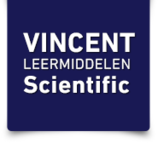The model had been developed in co-operation with Dr. Urs Schneider, Mannheim. What the Model is intended to show the interested Student and budding Orthopedic Surgeon: First, the shifting of the individual tarsal bones during the transition from a normal position to inversion and eversion in an unstrained foot can be semiquantitatively recognized. The purpose of this is to provide an insight into the movement patterns of the foot under physiological and pathoanatomical circumstances. To facilitate an understanding of these complex movements, the foot has been reduced to the tarsal bones, in which the actual movements "emerge", two each of the most important inverting and everting muscles and the ligament systems required to guide and delimit movement. The effects of the various movements on the mechanics of the metatarsus and forefoot are to be examined in the theoretical part of this paper where the quantification of bone movements will also be discussed. By facilitating an understanding of the movements of the individual tarsal bones, the model is also intended to provide a lead-in to Kapandji's model of the heterokinetic cardan joint (Kapandji 1992).This should promote an understanding of the statics and dynamics of the entire foot and the part it plays in the movements of the lower extremity. The other theoretical part of the paper and gait analysis in particular should likewise contribute to this end.
Height: 28 cm., length: 28 cm., depth: 16.5 cm., weight: 1.2 kg.
Er wordt een linkse of rechtse voet geleverd naargelang de huidige mogelijkheden van Somso (tenzij gespecifieerd in beschrijving hierboven). Als u specifiek links of rechts wenst, gelieve dit te specifiëren bij bestelling.
Height: 28 cm., length: 28 cm., depth: 16.5 cm., weight: 1.2 kg.
Er wordt een linkse of rechtse voet geleverd naargelang de huidige mogelijkheden van Somso (tenzij gespecifieerd in beschrijving hierboven). Als u specifiek links of rechts wenst, gelieve dit te specifiëren bij bestelling.
Eigenschappen
- NS 54/1/SOM

